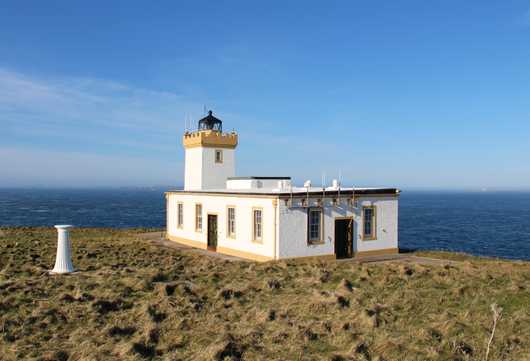Duncansby Head

There is no doubting that the Stevenson Family built some of the most advanced, impressive and beautiful lighthouses of their day, however, Duncansby Head was to be the second last manned lighthouse designed by the Stevensons, followed only by Esha Ness, and in the scheme of things, only one manned lighthouse was built after Esha Ness, further East at Strathy Point. The glory-days of grand lighthouse design in Scotland were coming to a close.
Advances in building and lighting technology meant that such large sturdy towers as those that came before were no longer a neccessity, and modern lighthouses could be much more basic and compact in design, and therefore cheaper to build. Added to this, Duncansby Head already benefits from natural elevation, as the Old Red Sandstone cliffs where the lighthouse was built rise to around 197 feet.
A temporary fog signal was established here on the most North-Easterly Point of Mainland Great Britain in 1914, and the lighthouse followed 10 years later, being lit on March 15th 1924.
Basic and utilitarian in design, the tower is square in footprint, tapering inwards ever-so-slightly towards the top. The gallery is castellated, and the lantern room is ocagonal at its base, but the glazing of the lantern, utilizing teselated panes of glass, has 16 faces. The roof is conical, and is topped by a small ventilator and lightning conductor.
Today, the fog signal is gone, having been deactivated August 14th 1987. Automation came about in 1997, and in 2002 the fog horn and two-storey keepers' accomodation building (which stood where the carpark is now located) were demolished following problems with damp and concerns about asbestos in the property. The red foghorn trumpet was salvaged at the time by a local resident, who stored it on their land until such a time that it could be restored. The trumpet was repaired and repainted, and now forms the centrepiece of the Seafarers' Memorial at John o' Groats. The only building which remains with the lighthouse tower is the old engine room which would have powered the fog signal and light.
